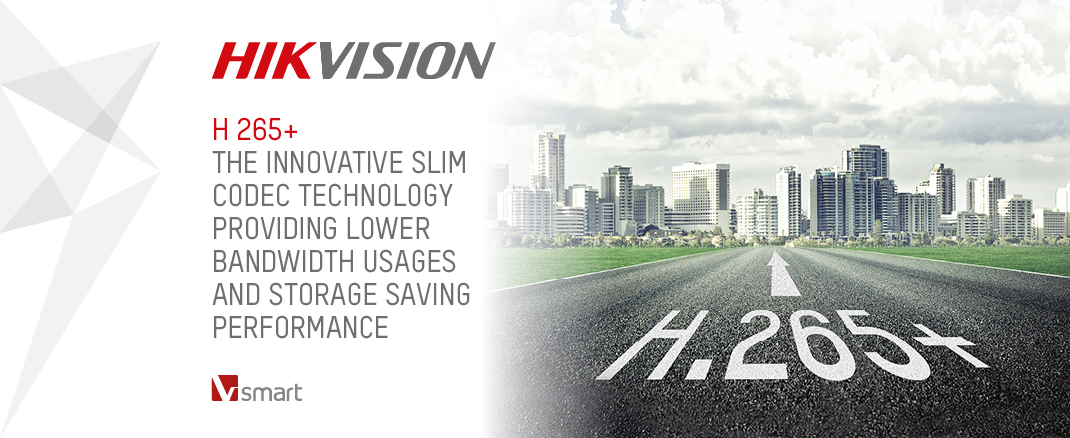
With true advantages H.265(+) is a major step forwards. As the official successor of the widely spread H.264, H.265(+) has large shoes to fill. For a long time H.264 supported the needs of the surveillance industry, but now we see some disruptive technological developments forcing us to look beyond the current H.264 into the new H.265(+).
Most surveillance cameras nowadays have a video resolution of 2MP (Full HD), for which H.264 is working perfectly. The latest generation commercially released cameras offer ultra-sharp resolutions in UHD 4K quality or even with an impressive 12MP resolution, while in our R&D labs we already have working models of up to a mindblowing 24MP. With the new H.265(+) we have room to grow even further and offer our customers a level of detail they have not experienced before: the H.265(+) standard leaves room for the camera resolution to increase to a 33.2MPs (8K UHD) while still managing the bandwidth in case of live video streams.
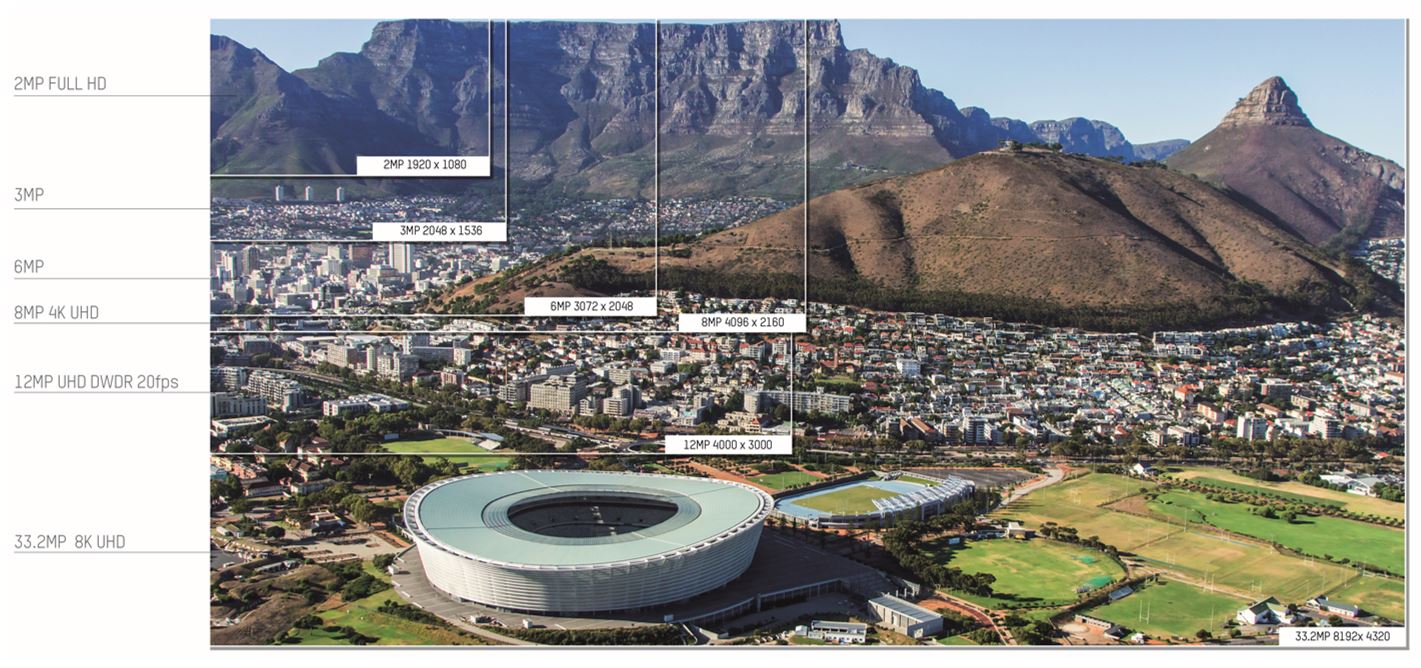
H265+
Several years ago, the first ultra HD surveillance camera were developed by Hikvision. Due to the enormous transmission bandwidth and massive storage capacity required, adaptation has been slow. Therefor Hikvision developed H.265+. “This technology is an intelligent proprietary technology based on the H.265 standard. We optimized it especially for the surveillance video application. H.265+ is able to even further decrease the bitrate of the surveillance video so as to reduce the bandwidth and storage cost.” says Tonko de Wit, Product Marketeer Hikvision Europe. “What we see today is that high resolution cameras are only used in specific situations. That does not diminish the value of the H.265+.”
For a more technical details of H.265(+), please read Hikvisions H.265+ Encoding Technology White Paper. An excerpt of the white paper is shown below.
Live situation showcase
To show the advantages of the new encoding technology we will discuss here a test based on surveillance cameras filming in a 1080p (full HD) resolution and a framerate of 25fps. We took two test environments: a cafe and a street crossing. In both environments we tested for three situations. This makes a total of six combinations we have test results for. The basis of the test is an instant bitrate comparison under these six circumstances to determine reduction of bandwidth needs with the new protocols. The average decreased rate between H.264 and H.265 is 47,8%. When applying Hikvision H.265+ the decrease rate increases to an average of 83.7 percent.
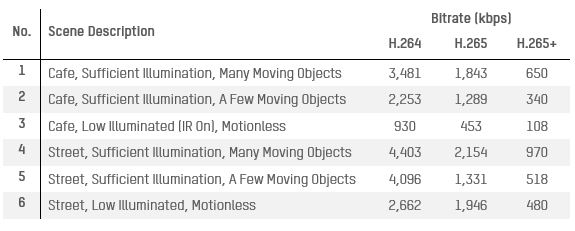
To come to an estimation of the needed storage capacity over a 24 hours surveillance day, we can extrapolate these bitrates. For this calculation the day is divided in 12 hours daytime and 12 hours of nighttime. For the daytime we calculated with “many moving objects” to keep the calculation most realistic.
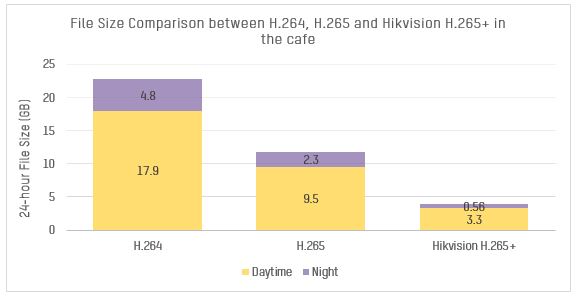
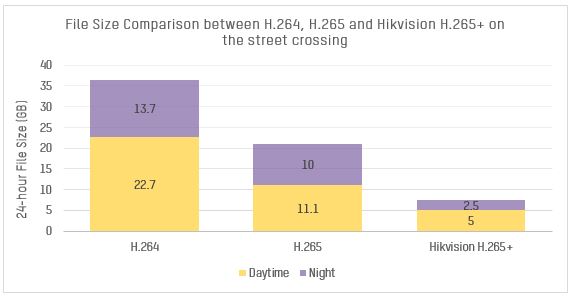
For the café monitoring, the decreased rate of the 24-hour file size between H.264 and Hikvision H.265+ is 82.5 percent. For the intersection monitoring, the decreased rate of the 24-hour file size between H.264 and Hikvision H.265+ is 79.4 percent. Hikvision H.265+ can greatly decrease the file size in the all-day monitoring and decrease the storage cost in the end.
 Nouveaux produits
Nouveaux produits



